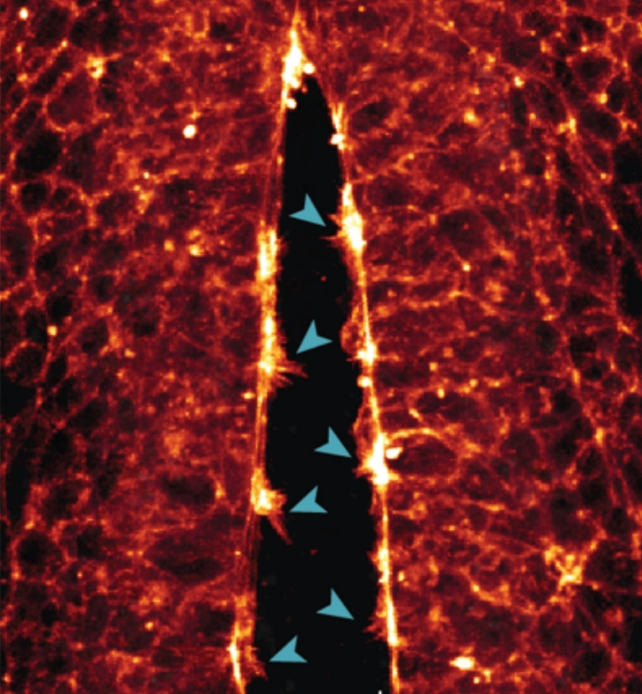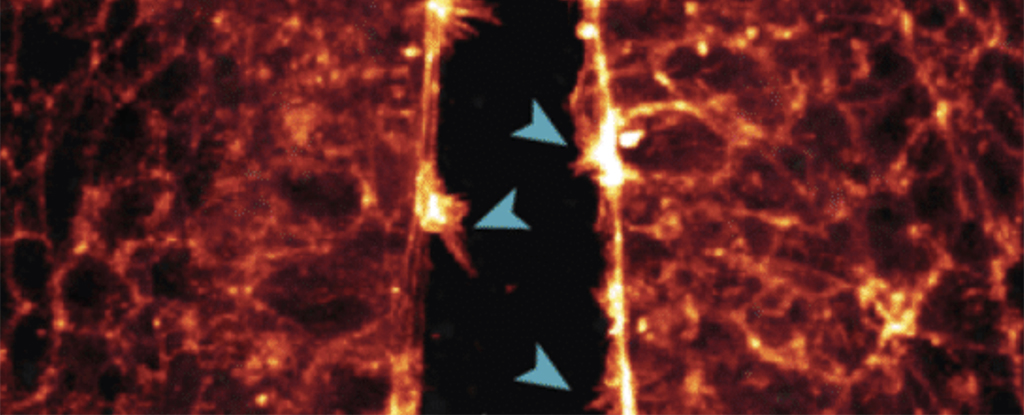To better track fetal development and better understand potential causes of birth defects and other health problems, scientists have turned to a source you might not expect: quail eggs.
In fact, our earliest developments as living beings are similar to those of quails, and because their embryos grow in eggs, they can be scanned relatively easily. Bird eggs have long been used by scientists to study embryos.
Here, researchers in Australia used quail eggs that had been bred to express a fluorescent peptide that binds to actin proteins that form the structure of the early embryo, the actin cytoskeleton. This approach allowed them to watch cells migrate and come together to form organs.
“For the first time, we have seen high-resolution, real-time images of key early developmental processes,” says developmental biologist Melanie White from the University of Queensland.
“To date, most of our knowledge about post-implantation development comes from studies on static slides, at fixed time points.”
frameborder=”0″ allow=”accelerometer; autoplay; clipboard-write; encrypted media; gyroscope; picture-in-picture; web-share” referrerpolicy=”strict-origin-when-cross-origin” allowfullscreen>
The team was able to see the very first stages of heart, brain and spinal cord formation. Several microscope instruments were used to capture the fluorescent marker, which outlined the movement of cells.
One of the observations made was that the neural tube, the precursor to the central nervous system, was ‘zipped shut’ as cells attached to each other.
“We saw the cells with their projections crossing the open neural tube to reach the other side. The more projections the cells formed, the faster the tube shot up,” White explains.
“If this process goes wrong or is disrupted and the fallopian tube does not close properly during the fourth week of human development, the embryo will develop brain and spinal cord abnormalities.”

Similar connections were made in the stem cells that would eventually form the quails’ hearts.
“We were able to image the filopodia from cardiac stem cells deep within the embryo as they first made contact by extending and grabbing onto their surroundings and each other to form the nascent heart,” White said.
“It’s the first time anyone has captured live images of the cell’s actin cytoskeleton that makes this contact possible.”
In addition to providing a fascinating insight into early life, the study is important for expanding our knowledge of how and why birth defects occur. When the bonding processes fail, it can lead to problems for the developing baby.
Seeing these biological transformations happening in real time, and on the smallest scale, could be useful in the future to reduce or at least identify the risk of birth defects. Many more studies of quail eggs using this process are now planned.
Scientists continue to improve their models and understanding of what happens in the womb, so we can ensure that more pregnancies are as healthy as possible.
“Our goal is to find proteins or genes that can be targeted in the future to screen for birth defects,” White said.
“We are very excited about the possibilities this new quail model now offers to study development in real time.”
The research was published in The Journal of Cell Biology.
